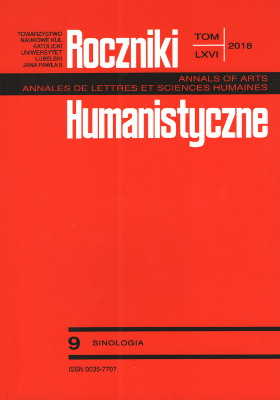Najdawniejsze zapożyczenia chińskie w językach tocharskich
The Oldest Chinese Loanwords in the Tocharian Languages
Author(s): Krzysztof Tomasz WitczakSubject(s): Language and Literature Studies, Theoretical Linguistics, Lexis, Historical Linguistics
Published by: Towarzystwo Naukowe KUL & Katolicki Uniwersytet Lubelski Jana Pawła II
Keywords: Chinese; language contacts; borrowings; silkroad; Tocharians
Summary/Abstract: Tocharian tribes—of Indo-European origin—settled along the northern edge of the Tarim Basin (now 新疆 Xinjiang, China) around 2000 BC. Living on the ancient trade route leading from China to Europe, they controlled an important section of the Silk Road, running along the Taklamakan Desert (塔克拉玛干沙漠) for about three millennia. The Tocharians were the first Indo-Europeans who came into contact with a Sino-Tibetan population, in particular—with Chinese tribes. The author analyses the oldest Chinese borrowings which entered the two Tocharian languages in the Old Chinese period (1000–200 BC), as well as in the epoch of the Han Dynasty (206 BC–220 AD) and in the Early Middle Chinese period (ca. 600 AD). The Tocharians adopted various achievements of Old Chinese civilization, e.g. the terms for ‘rice’ (Toch. AB klu ← OCh. 稻), ‘brandy’ (Toch. B śak(u)se ← OCh. 粟酒), ‘lamp’ (Toch. AB cok ← EMCh. 燭), ‘pot’ (Toch. B lwāke ← OCh. 陶壶), or ‘abacus’ (Toch. B ṣipāṅkiñc ← EMCh. 數盤工句). They also took over Chinese names of measures and units that proved useful in trade, e.g. Toch. B cāk ‘hundred quarts’ (← OCh. 石), Toch. B cāne* ‘cash’ (← OCh. 錢), Toch. B tau ‘ten quarts’ (← EMCh. 斗), Toch. B ṣaṅk ‘a measure of volume’ (← EMCh. 升). The term for a larger settlement (Toch. A ri, B riye ‘town, city’ ← OCh. 里 ‘village, community’) was also borrowed in the Old Chinese era, as was the name of the last month of the year (Toch. B *rāp ← OCh. 臘). In the early phase of the Middle Chinese period, Tocharian tribes also borrowed the Chinese name of a beautifully-colored exotic bird (Toch. A yāmutsi, B yāmuttsi ‘a kind of waterfowl’ ← EMCh. 鸚鵡子 ‘parrot’).
Journal: Roczniki Humanistyczne
- Issue Year: 66/2018
- Issue No: 9
- Page Range: 121-138
- Page Count: 18
- Language: Polish

